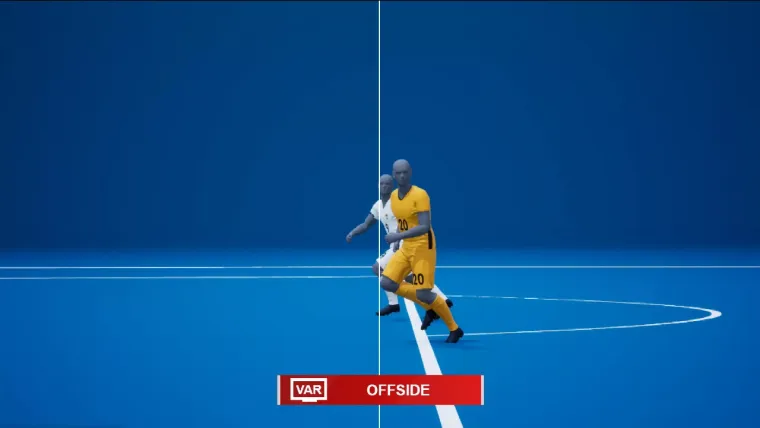The Premier League announced that semi-automated offside technology (SAOT) would be introduced from the 2024/25 season, with it coming into play around September or October.
In recent years, offside decisions related to goals have been reviewed by VAR officials but there have been complaints about the time taken for these checks, the lack of transparency for fans in the stadium, and errors in decision-making.
A notable incident occurred early in the 2023/24 season in Liverpool's game at Tottenham Hotspur, where a legitimate goal by Luis Diaz was disallowed due to a miscommunication among the officials.
Previously, the Hawk-Eye system in use involved a gridline or crosshair approach, applying calibrated cameras around the pitch to determine offside positions. Starting from the 2024/25 season, this will be replaced by SAOT, which is currently used in the UEFA Champions League and major international tournaments.
All the latest EPL club news | Team-by-team Premier League schedule for 2024/25 | Latest Premier League top scorer rankings
The Premier League's official statement read:
"At a Premier League Shareholders’ meeting today, clubs unanimously agreed to the introduction of Semi-Automated Offside Technology.
"The new system will debut in the Premier League next season, with expectations that it will be ready for use after one of the Autumn international breaks.
"This technology will provide quicker and more consistent placement of the virtual offside line using optical player tracking. It will also produce high-quality broadcast graphics to enhance the experience for both in-stadium and broadcast viewers."
Semi-automated offsides in the Premier League: When does it come in?
The SAOT system is not expected to be rolled out in the Premier League until September or October 2024 — potentially well over a month since the 2024/25 season started.
Why the delay? Well, it's largely because the company implementing the tech needs time to conduct sufficient tests of its reliability once the necessary cameras have been installed in top-flight grounds (which also takes time).
While extensive trials and analysis have been conducted, SAOT won't be operational until after one of the three autumn international breaks. However, there's no confirmation whether this will be in September, October, or November, as the Premier League wants to ensure the technology's reliability before full implementation.
"It's a step forward for the Premier League."@ahmedNBC, @robbiemustoe and Robbie Earle weigh in on the news that Semi-Automated Offside Technology will be introduced next season. pic.twitter.com/hHuzp5Jrou
— NBC Sports Soccer (@NBCSportsSoccer) April 13, 2024
How will semi-automated offsides be used in the Premier League?
The tech is designed to remove the need for VAR officials to draw grid lines on still images in order to decide tight offside calls. The hope is that this both speeds up the process of goal reviews and drastically reduces the risk of human error.
Different versions of SAOT are used, but the general process is for special cameras to track several points on players' bodies. With the help of a chip embedded in the matchball, it can then be possible to generate 3D images using computers to show whether attacking players are offside or not. This will help referees to make fair and correct decisions in the event of a close call without relying on those painstaking VAR grid lines.
How much time will it save?
It is anticipated that the use of SAOT could reduce decision-making time by approximately 30 seconds per incident. As the technology provides instant results, assistant referees can be informed of offsides during live play, allowing them to raise their flags immediately if necessary.
While the specific system may vary, a version of SAOT was used at the 2022 World Cup in Qatar, where a chip was embedded inside the match ball. The average time for offside decisions during that tournament was 25 seconds.
That same technology is already in Serie A and will be introduced in La Liga from the 2024/25 season. UEFA also used the chip-in-ball version for Euro 2024.

